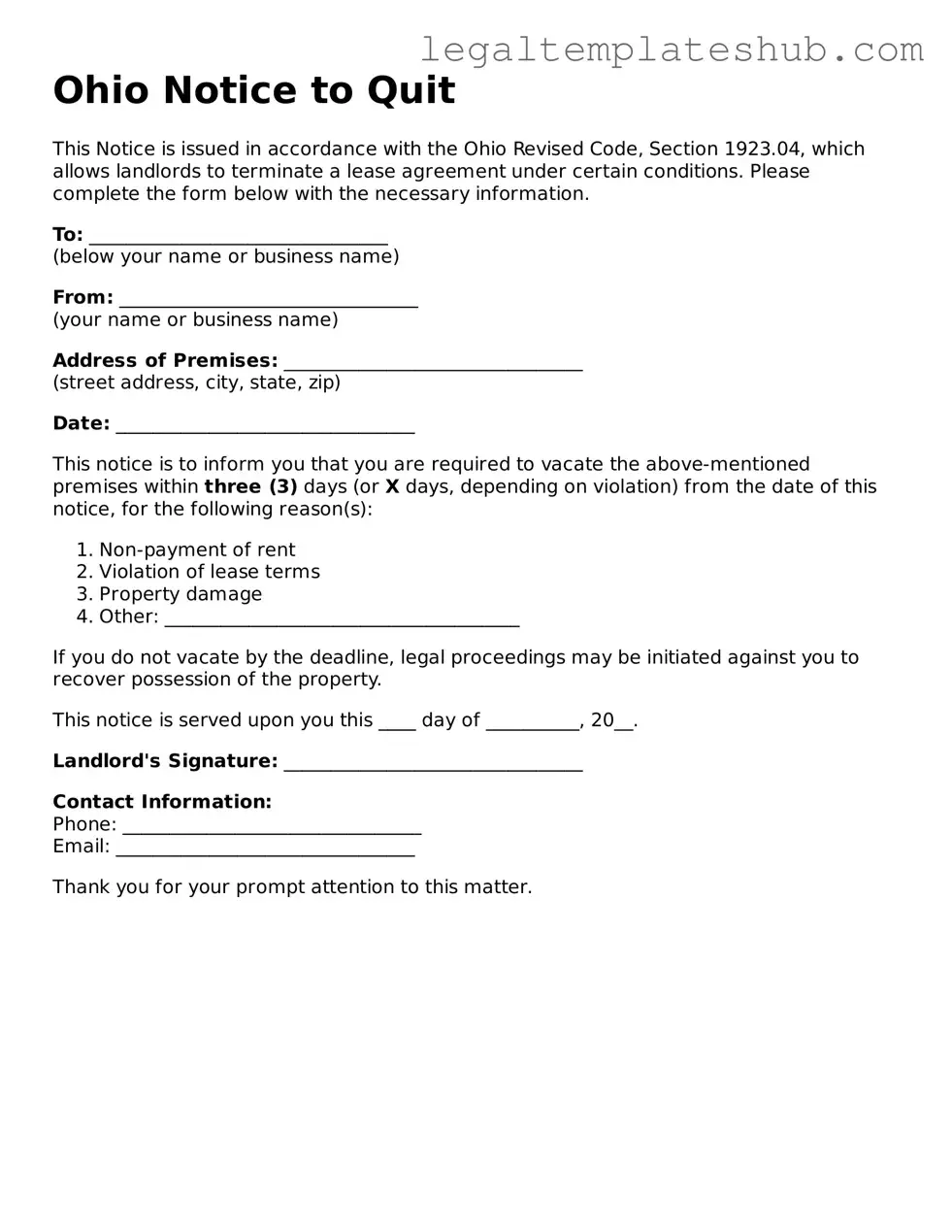Instructions on Filling in Ohio Notice to Quit
After you have gathered the necessary information, it’s time to fill out the Ohio Notice to Quit form. This form is essential for notifying a tenant about the need to vacate the premises. Make sure to have all relevant details at hand before you begin.
- Start by entering the date at the top of the form. This should be the date you are filling out the notice.
- Next, provide your name and address in the designated sections. This identifies you as the landlord or property owner.
- Fill in the tenant's name and address. Ensure that this information is accurate to avoid any confusion.
- Specify the reason for the notice. This could include non-payment of rent or lease violations. Be clear and concise.
- Indicate the date by which the tenant must vacate the property. This should comply with Ohio law regarding notice periods.
- Sign the form at the bottom. Your signature verifies that the information provided is correct and that you are officially notifying the tenant.
- Make a copy of the completed form for your records before delivering it to the tenant.
Once the form is filled out, it needs to be delivered to the tenant. This can be done in person, by mail, or through another method that ensures the tenant receives it. Keep a record of how and when you delivered the notice for your own documentation.
